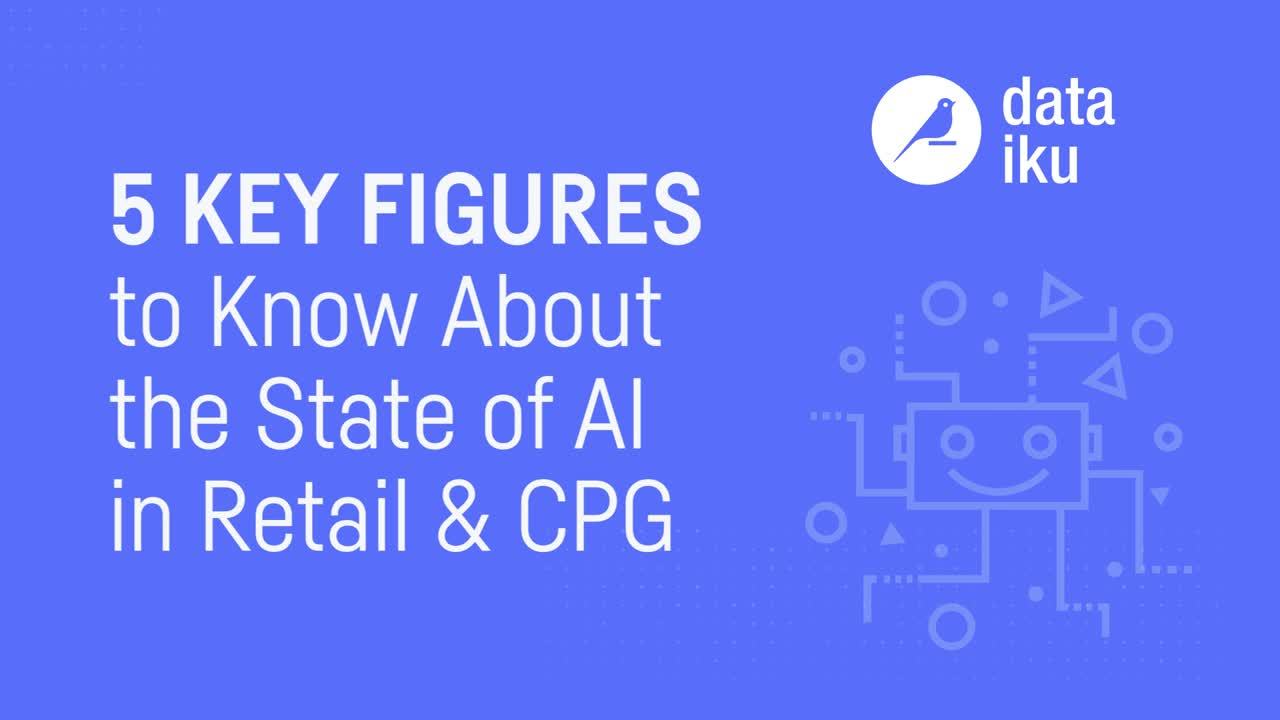The rapid digitization of communication, shopping and almost every other aspect of daily life has entirely up-ended consumers’ habits and expectations. Now more than ever, brands and retailers need to re-appraise every aspect of what they do: how they develop products, how they interact with consumers, and how they operate their stores. And retailers need to do this quickly or risk being left in the dust.
These are some of the emerging trends and opportunities that retail and CPG companies will have to take into account in the upcoming year in order to stay on top of their Enterprise AI journey.
The AI Disruption In Retail & CPG Is Reaching An Inflection Point
The current retail landscape is defined by disruption. Legacy retailers are competing for market and mindshare with direct-to-consumer startups and brands and ecommerce marketplaces. Consumers now have more choices than ever to fulfill every need, which is accelerating their expectations around the shopping experience. At the same time, though, we’ve reached an inflection point in the development of AI, machine learning, and data science platforms that is a windfall to brands and retailers.
In this face of this rapid change, every retail business must excel in a number of core areas to keep pace - personalization, staffing, supply chain and cross-channel experience, among others. Foundational to each of these is the ability to leverage data-rich intelligence and ensure these insights are distributed across all levels of the organization.
New Data, More Data, Joined Up Insights
Brands and retailers are engaged in collecting as much data as possible on customers to more effectively communicate with them and retain their loyalty. According to Harvard Business Review, companies that have captured the full customer journey by integrating multiple sources of data are generating up to 8.5x higher organization value.
Every day, the algorithms underpinning these processes become more sophisticated, accounting not just for a customer’s own purchases but myriad other data points, including subtle behavior cues, both online and in real life, to better understand a customer’s personality.

AI Is Helping Retailers Better Understand The Interplay Between Their Online And In-Store Operations
A McKinsey analysis projected that more than three-quarters of retail sales would take place in-store in 2025, but many of those sales will be driven by a retailer’s online presence. Similarly, many online sales can be attributed to an experience that customers had in-store. Geospatial analysis is helping retailers to better understand the interplay between their brick-and- mortar and online operations.
With opt-in e-receipt programs and anonymized cell phone data, retailers can use AI systems to analyze how a consumer behaves across its multiple channels. It can track the path that a customer takes preceding a purchase and pinpoint those parts of its operation that are leading to conversions. Such analysis is particularly valuable for global retailers seeking to understand how to drive online sales in different parts of the world.
Finally, in order to capitalize on these emerging opportunities and trends, it is not enough for retailers to just equip their data teams with a cutting-edge data science and AI platform. It’s crucial to understand how to transform the entire enterprise, creating a core competency that differentiates their stores in the ever-evolving world of digital transformation.




